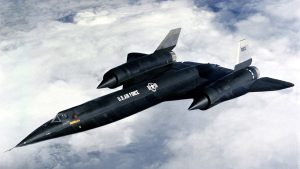The House has voted against retiring the F-22 Raptor for now, but 21 A-10 Warthogs will be retired from service in 2019.

Efforts by the Air Force to retire many aircraft have been updated in a key defense policy measure that is very close to passage in Congress. The House of Representatives passed the National Defense Authorization Act for Fiscal Year 23 (NDAA). Still, the Air Force sought to eliminate two vital warplanes before Congress decided.
Twenty-one A-10 Warthogs will be retired from service in 2019, but the House has rejected phasing out the F-22 Raptor. Regarding F-22s, the Air Force planned to retire 33 of the oldest planes. The NDAA is projected to pass in its current form in Senate, so here’s hoping that F-22 gets through unscathed.
The A-10s at Indiana’s Fort Wayne Air National Guard Station will be decommissioned and replaced with F-16s. Some lawmakers have battled to keep the A-10 around, while other Air Force officers have sought to move on from the ground strike aircraft for years.
The service nearly killed off the F-22 because some of the older Block 20 Raptors were scheduled for retirement. In the opinion of some legislators, both planes are prohibitively expensive to operate and keep in good repair. A good illustration of this is the F-22, which will cost roughly $1.8 billion to maintain for the next eight years.
Maintenance and support personnel funding for the F-22 is enshrined in the NDAA. This policy measure authorizes no decrease in F-22 production. The bill mandates research on upgrading older Block 20 Raptors to the latest Block 30 and 35 models.
Other types of planes, like F-16 C/Ds and F-15 C/Ds, will be removed from the Air Force’s active-duty fleet over time. The number of aircraft in the fleet will be reduced from 1,970 to 1,800 in total. The Air Force will update Congress once more on the effects of these impending reductions on the force’s readiness and posture.
There are benefits and drawbacks to the A-10. During the conflicts in Iraq and Afghanistan, it made its country proud by providing crucial close air support to beleaguered troops on the ground. Its deadly 30mm GAU-8/A Avenger cannon wreaked havoc on opposing forces. The plane’s effectiveness against contemporary air defenses concerns certain Air Force officers and lawmakers. The plane flies at a sluggish, low altitude. It is incapable of avoiding a barrage of surface-to-air missiles in contested airspace.
Air Force Chief of Staff General CQ Brown told Congress in April that the A-10 is a wonderful platform for a permissive environment. We shouldn’t be rolling into too many hospitable situations shortly if any at all.
Several lawmakers say that reducing the number of U.S. stealth planes is too soon, even though they are expensive per hour of flight. It is because China is increasing production of the J-20 Mighty Dragon, a stealth fighter, and they could use the money saved by getting rid of older planes to buy more platforms like the F-35, which is the main idea behind the decrease in force. The Air Force would be unable to keep up with China’s quick production of the new J-20 if it were to get only the 38 new F-35s requested in the NDAA. The Next Generation Air Dominance Fighter and the new F-15EX Eagle II require financing for the branch.
The compromise between Congress and the Air Force shouldn’t hurt the military too much. Those A-10s were part of the reserve force, and the F-22s had room to grow. But China is making new jets, so the U.S. must keep up or risk falling behind. As a result of this evaluation, many lawmakers have decided that FY23 is not the right time to begin retiring F-22s from service.






